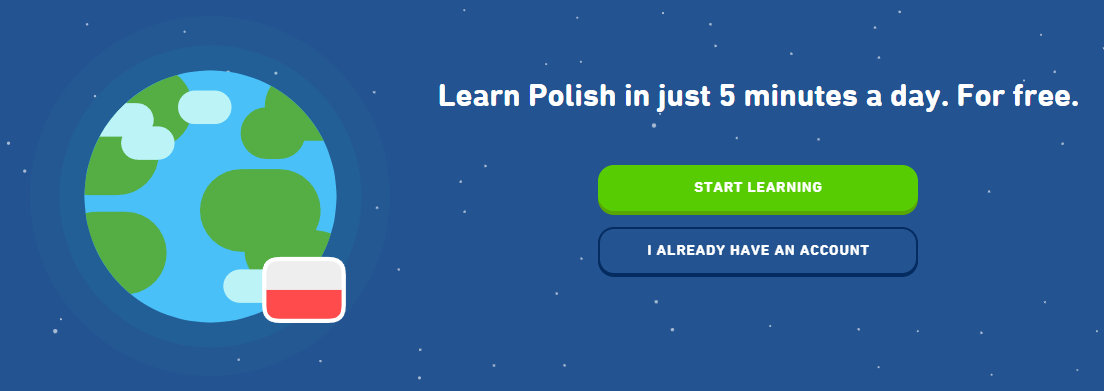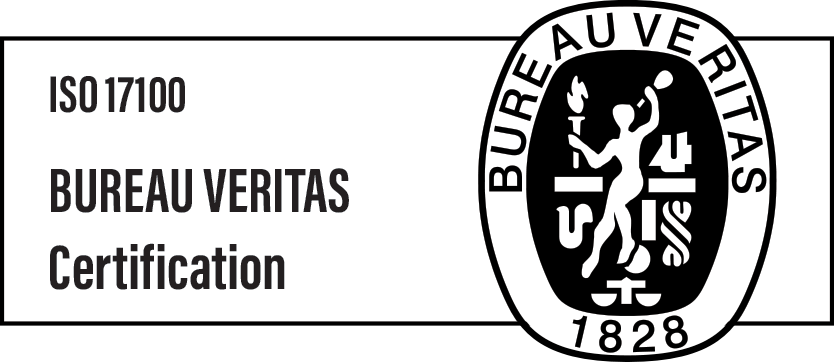How to learn Polish

Let’s face it: Polish has never been a popular choice among second-language students. In fact, Slavic languages have not received much attention from both young and adult learners. There is, of course, a reason for this: Slavic languages are considered to be extremely difficult for English speakers, with Polish being placed high on the list of the hardest languages to learn (e.g., Babbel’s article, February 2021).
But, against all odds, you’ve decided to start learning Polish. Congratulations! In this article, we are going to take you through some useful tips on how to polish your Polish!
- If you’re not sure whether you should learn this fascinating language, take a look at our second blog post about it: 5 things you didn’t know about Polish.
Step 1: preparation
Learning any language requires patience, determination and free time. You need to double or triple these elements when learning Polish – and that’s not an exaggeration! At the beginning of your journey with Polish, you have to be prepared for many new, sometimes shocking things that may turn your linguistic world around! Polish is said to be one of the hardest languages for a reason, and in this Slavic environment, you will find rules, exceptions and nuances which may seem odd, and even absurd. Let’s be honest: how can words like Strzebrzeszyn or chrząszcz be real, right?
We are well aware that Polish looks scary sometimes, but there is exceptional beauty in it; that is why more and more people are getting drawn to it. There’s no doubt you can overcome any possible obstacle with the proper attitude. So, if you’re prepared, let’s move on to the next steps!
Step 2: alphabet, spelling and sounds
Thankfully, Polish does not use the Cyrillic alphabet like other Slavic languages. Most of the letters can be acquired fast, and their sound is also quite similar to the corresponding ones in English. Of course, if you wish to achieve mastery in Polish, it is recommended to know the difference between English and Polish ʧ sound, for example, like in the word cheese.
However, there are a few novelties that start here. The Polish alphabet consists of 32 letters, 9 of which use so-called diacritical marks – graphic additions to a letter that change its sound, e.g.:

Polish, much like English, makes use of digraphs – a combination of two letters that represents a new sound. Unfortunately though, in Polish, we have slightly more variations than English does.
Bearing this information in mind, it is crucial to remember all signs, sounds, and differences in spelling when you start learning Polish. Polish orthography may not strike you as being highly intuitive, but you’ll get there! At the start, pronunciation is the key; under no circumstances should you think about avoiding diacritical marks – there’s a huge difference between łaska and laska, believe us!
Step 3: materials
In order to fruitfully continue the learning process, it is important to find appropriate resources which can address any educational needs. There are many ways to improve your Polish skills; here, we will describe three of them: apps, podcasts, and YT materials.
LANGUAGE APPS
Learning new languages has become much easier with the rise of apps guiding us through this process. With their help, you don’t need to spend time searching materials on your own; rather, you can focus fully on absorbing the language using the lessons already prepared.
Duolingo is a perfect example for beginners who are lost in the amount of knowledge they have to choose from. Duolingo offers ready-made vocabulary and grammar sections with the possibility of practising pronunciation and spelling. The only thing you need to worry about is completing every lesson as well as you can!

PODCASTS
When it comes to learning a foreign language, there is nothing more useful than using authentic materials made by native speakers. Platforms like Spotify offer multiple categories from which you can easily choose the ones you find interesting. There are also special podcasts dedicated to Polish learners, like PolishPod101 or Real Polish.
YT VIDEOS
The YouTube platform is rich in content for students of any kind. Polish educational materials include grammar explanation, pronunciation practice and vocabulary topics. There are also videos covering diverse social and cultural aspects, like Polish food or literature. A great way to get to know Polish better is by listening to foreigners talking about it! One example would be Russell from the Love My Poland channel, who’s been living in Poland for about 20 years now and is delighted to share his love for this country, its language and culture. If you want to understand Polish culture – that’s your must-have!
Step 4: language courses
Learning at home can be beneficial and fun; unfortunately, after some time, you may find yourself stuck, not knowing where to go next. Choosing a language course can be your final step in the process of learning Polish, or it can be introduced at the very beginning of your Polish adventure – the time isn’t important. What is crucial is the fact that making an informed decision on the language course guarantees an organised and effective learning process. It may be more related to textbooks and exercises, but all of them are necessary for your further development. You can also choose discussion classes where you focus primarily on speaking – this can be a great way to face the stress barrier that learners can often experience during conversations in the target language.
Skrivanek Language School offers multiple course modes, e.g., business courses, individual lessons – both stationary and online – and also exam preparation. Choosing a suitable course boosts language confidence, helping with monitoring your progress at the same time.
Learning Polish can be a real challenge with its consonant clusters and impossible conjugation. We admit it; it requires a lot of effort, strength (to force your tongue to produce these unrealistic sounds!) and perseverance. Imagine, though, how proud you will feel after reciting, without a falter: W Strzebrzeszynie chrząszcz brzmi w trzcinie!

